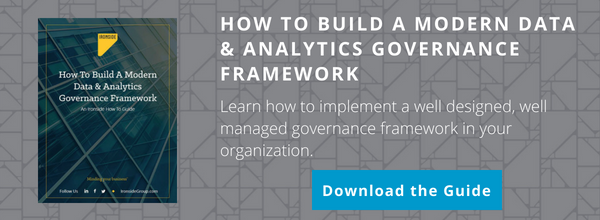Challenges of Customer Segmentation
Customer segmentation is defined as “the process of dividing customers into groups based on common characteristics so companies can market to each group effectively and appropriately.” By using the correct attributes to define the customer segment, it allows companies to identify the right customers for targeted and relevant offers. Those who successfully define and maintain customer segmentation can derive a competitive advantage from the implementation by improving customer experience.
However, there are potential pitfalls that can reduce the effectiveness of a customer segmentation initiative. This article will identify the pitfalls and propose solutions in order to improve the chances of a beneficial customer segmentation project.
Data Quality
The initial setup of customer segmentation for businesses can be a hurdle. Identifying the need for customer segmentation is the first step towards implementing a process that aligns with your overall business plan. When businesses don’t have an effective customer segmentation process, they might find themselves providing the same service level for all customers and all products without focusing on the top-level customers or products that bring in the best margins. In order to maximize productivity and profitability, customer segmentation helps businesses apply the 80/20 rule, instead of spreading themselves thin by trying to provide the same service level for every customer, regardless of whether they are a top customer or not.
Challenge
One of the biggest issues with customer segmentation is data quality. Inaccurate data in source systems will usually result in poor grouping. For example, customers who are individuals, attributes like age, gender, and marital status are frequently used. If these attributes are not maintained properly, the segments will be inaccurate and as a result, the information will likely be less useful. If the users do not feel comfortable with the quality of the data, they are likely not going to use the segments. Data quality issues also arise from a lack of maintenance and regular cleansing to ensure accuracy.
Solution
There are some processes that can be implemented to provide improved data quality for customer segmentation maintenance. One of the important aspects of data quality is the concept of assigning resources to manage attributes for customers. This resource, usually called data stewards, is responsible for managing the set up of a new customer, making sure all critical attributes are provided before the customer is set up and maintenance begins.

The data stewards act as gatekeepers to the data. They are responsible for maintaining the accuracy of the customer segmentation definitions was well as being the arbiter for any changes to the attributes that may be in conflict with different user groups (i.e. different departments with different definitions for the same attributes). The data steward is usually a part of a larger master data management strategy that includes people, processes and technology working together to organize and maintain a company’s master data.
Data Management
Frequently, customer segmentation definitions and associated attributes will be brought into a data warehouse and leveraged for analytical purposes. This is another opportunity for data cleansing. When the data is extracted from the source system, data integration tools can be used to define the customer segmentation rules and load the data with the proper groupings. Many of the data integration tools have data quality components. Gartner has created a Magic Quadrant specifically for data quality. Using data integration tools and defining the rules for data transformations creates a single process that is consistent and easy to manage. This will reduce the chances that the customer segmentation is not cleansed and ready for the end users.
Challenge
Another common problem with customer segmentation is that the business users do not understand the segmentation definitions and are using them incorrectly. There can be many customer segments set up to assist with specific business processes. The users must be trained to understand the different customer segments that have been defined, the actual data within the segments that represent the categorizations, and when to use the correct customer segmentation for the proper analysis scenarios.
Solution
Business intelligence tools are often used to analyze customer segmentation along with other information such as sales, marketing, and trends. As stated before, using data integration tools and defining the rules for data transformations creates a single process that is consistent and easy to manage. End users must be adequately trained in not only the tool, but also the metadata that represents the attributes that are being used for analytics. When the users are comfortable with the information, advanced analytics can be used to predict future behaviors and perform what-if scenarios with the data.
Create a Competitive Advantage
Many companies understand the benefits of defining and implementing customer segmentation and can create a competitive advantage. Successful customer segmentation projects are the ones that avoid the pitfalls mentioned. Master data management including data stewards, well-defined processes and technology can help support customer segmentation and the value it brings to a company. Proper end user training including business purpose, how the different segments are defined, and what the data in each customer segment is, is essential to user adoption and the successful usage of the segments in analytics.
About Ironside
Ironside was founded in 1999 as an enterprise data and analytics solution provider and system integrator. Our clients hire us to acquire, enrich and measure their data so they can make smarter, better decisions about their business. No matter your industry or specific business challenges, Ironside has the experience, perspective and agility to help transform your analytic environment.






